Little Known Houseplants That Anyone Can Grow
By Mary Francis, Fairfax Master Gardener Intern
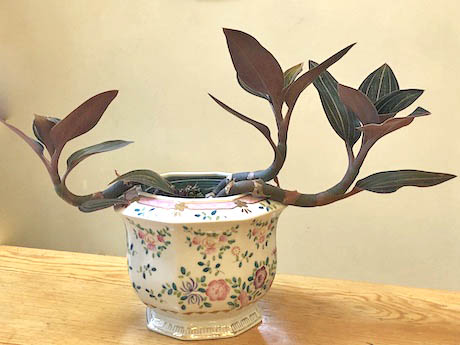
Jewel Orchid Anoectochilis
There are many fine plants that are surprisingly easy to grow. Those featured in this article may not be suitable for houseplant beginners, yet they are most satisfying for those with some experience. These plants have key essential needs that, once met, vastly reward the grower. They are worth seeking out.
Jewel Orchids
Everyone is familiar with orchids, but have you ever encountered the jewel orchids? They are prized for the beauty of their leaves as the flowers are small and not showy. There are five genera of jewel orchids, all terrestrial, meaning they grow on the forest floor. Special potting mix is available and often includes a mixture of potting soil, sand, peat moss, sphagnum, perlite and cocoa fibers. They prefer a humid environment, so misting or even placing them in a terrarium is a good idea.
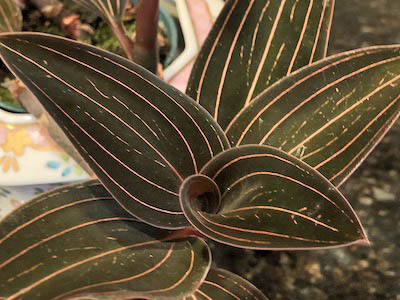
The leaves of Anoectochilis
The easiest to grow and the most commonly available jewel orchid is Ludisia discolor. Notable cultivars include ‘Red Velvet’ with red veins, and ‘Green Velvet’ which has bright green leaves with white veins. It can handle low light but prefers low to medium light for more showy leaves. It also tolerates overwatering or underwatering, thrives with orchid fertilizer and can even live in African violet potting soil. Flowers should be removed if they appear because the flowers weaken the plant.
Jewel orchids of the genus Anoectochilus are also worthy of consideration. These plants have stricter requirements than Ludisia discolor yet are surprisingly easy to grow. Use special Jewel orchid mix only, provide a humid atmosphere and place in medium light but not direct sunlight. This plant is less tolerant of underwatering or overwatering. Fertilize it with balanced fertilizer once a week in summer or once a month in winter. If in low to medium light, reduce watering and fertilization in winter.
Heart Leaf Hoya
Plants of the genus Hoya are popular and readily available in a variety of leaf shapes, sizes, colors and blooms. The heart leaf hoya (Hoya kerrii) is a particularly charming species. The plant grows slowly and has heart shaped waxy leaves on vining tendrils. Hoyas generally require medium to high light and do not appreciate overwatering. They prefer container potting soil and balanced fertilizer. Do not purchase a single rooted leaf of heart leaf hoya because it will stay just as it is and not develop into a vine. Although it is a somewhat difficult plant to find, it is worth seeking out.
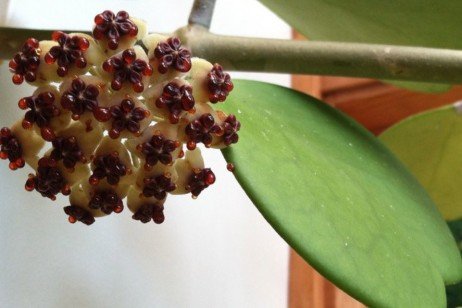 Heart Leaf Hoya |
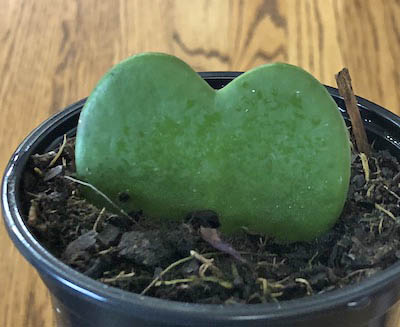 A single rooted leaf of heart leaf hoya will stay as is, never vining |
Living Stones
Lithops sp. are succulents from southern Africa that resemble pebbles. They are easy to grow if one understands their needs. There are many good reasons to grow Lithops. These are appealing plants in appearance with many variations in color and pattern. They need little watering and little room. They live as long as fifty years, grow very slowly and can remain in a small, deep pot for years. Sometimes they flower. They are nontoxic to humans and pets.
Soil requirements are narrow. They require very well drained soil, and special Lithops mixes are recommended. Overwatering can be fatal. Water no more than once a week and never allow water to accumulate under the plant. Watering properly, which means not watering frequently, is the key to growing them successfully. They require a sunny window and do particularly well if supplemental light (a grow light) is provided.
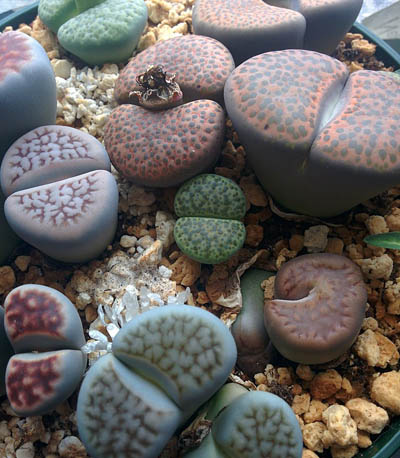 Lithops growing in pot |
 Lithops seedlings six weeks after germination |
Resources
Anoectochilus, American Orchid Society
Jewels of the Orchidaceae, W. John Hayden, University of Richmond, School of Arts and Sciences
Hoyas as Houseplants, Penn State Extension
Living stones: Lithops, University of Wisconsin — Madison Master Gardener Program
Plant of the Week, University of Arkansas System Division of Agriculture